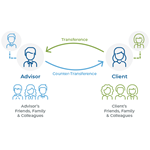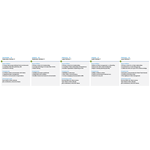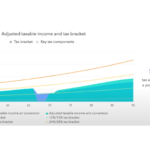In the early days of financial planning when an advisor’s primary function was to provide access to capital markets, fees that clients paid were baked into the cost of the product they were buying. With the advent of planning as a service, however, fee transparency became an important feature for clients. Accordingly, charging an explicit fee for financial planning is a relatively new phenomenon, and as a result many financial planners struggle not only with when and how to communicate the fee itself and the value they provide, but with the fear that they will scare away prospective clients in the process.
In our 43rd episode of Kitces and Carl, Michael Kitces and client communication expert Carl Richards discuss the merits of two opposing philosophies around when to discuss fees with prospective clients and strategies to help clients understand the value of the services an advisor provides.
One approach, for some advisors, is to first create context around the services they provide before discussing fees, leaving it until the end of the second meeting after gaining (and demonstrating) a clear understanding of a prospective client’s situation and presenting a rough plan about how they will align the use of the client’s capital with what they state is important to them. By doing so, the advisor can give the prospective client the experience of what it will be like working together.
Another approach, meanwhile, is to state their fees directly on their website, so prospective clients can either filter themselves out of the process even before it begins (because, for some people, one of the main determinants of whether or not they will hire an advisor is if they can afford it in the first place) or at the very least come into a first meeting with a clear understanding of what they will be paying. Moreover, in an environment where advisors market on being transparent around their fees, waiting until the end of the second meeting to discuss fees is the opposite of clear and transparent.
Regardless of the approach, the important thing is for the advisor to be confident that they will deliver value for the fee that they charge. Because a fee will only ever be questionable in the absence of value. And explaining that value simply boils down to gaining an understanding of what a prospective client may be comparing the fee to (e.g., did they have a negative experience with a previous planner or think that they weren’t even paying a fee at all?) and figuring out where their “cost anchor” may be (e.g., do they view the fee as an expense that is anchored to their annual cashflow versus an investment that is allocated from their entire balance sheet?).
Ultimately, the key to discussing fees is first solving for when to discuss fees, and being able to do so confidently. After that, the value part of the equation hinges on understanding what clients might be comparing the process to and ensuring that they view financial planning as an investment in themselves and their future. Because when you can relate the fees to their lives, align it with their pricing scale, and address the problems that they're trying to solve that brought them in the first place, the whole nature of the fee/value conversation becomes much more collaborative!






 Welcome back to the 195th episode of Financial Advisor Success Podcast!
Welcome back to the 195th episode of Financial Advisor Success Podcast!



